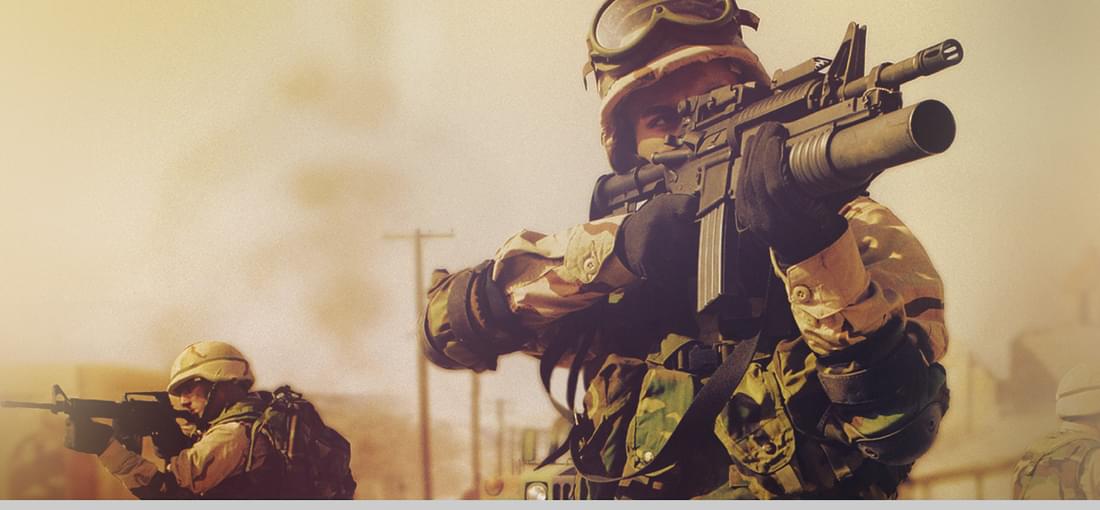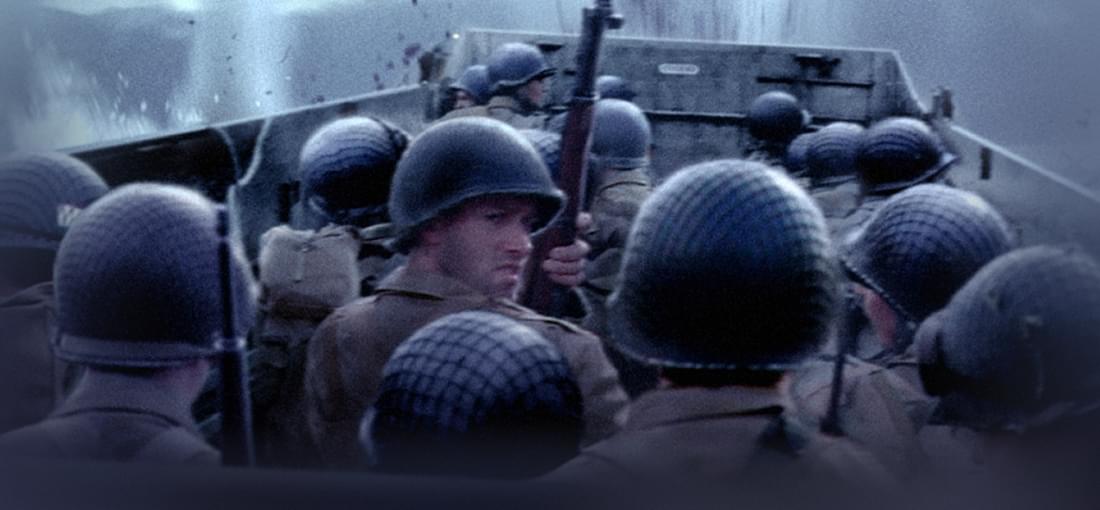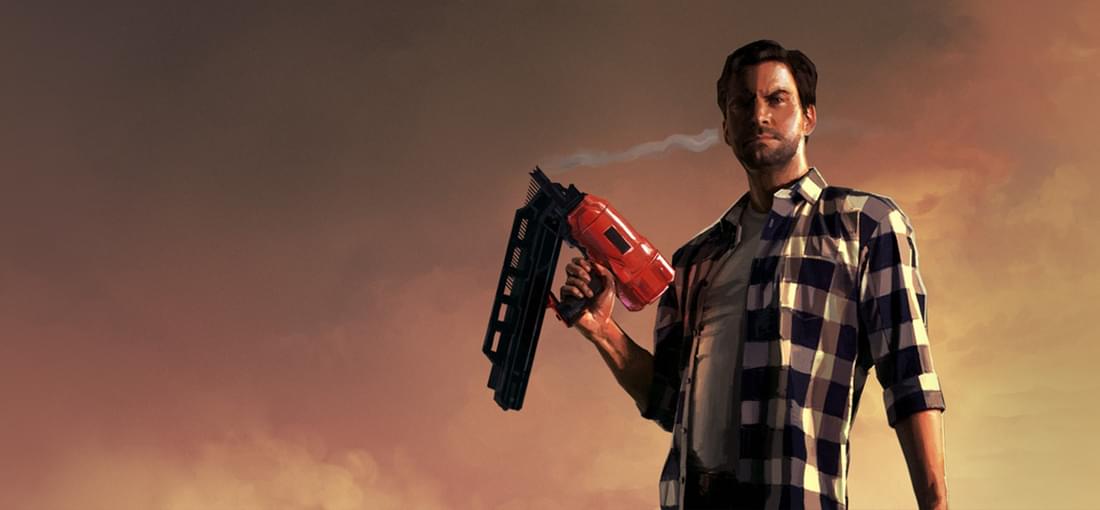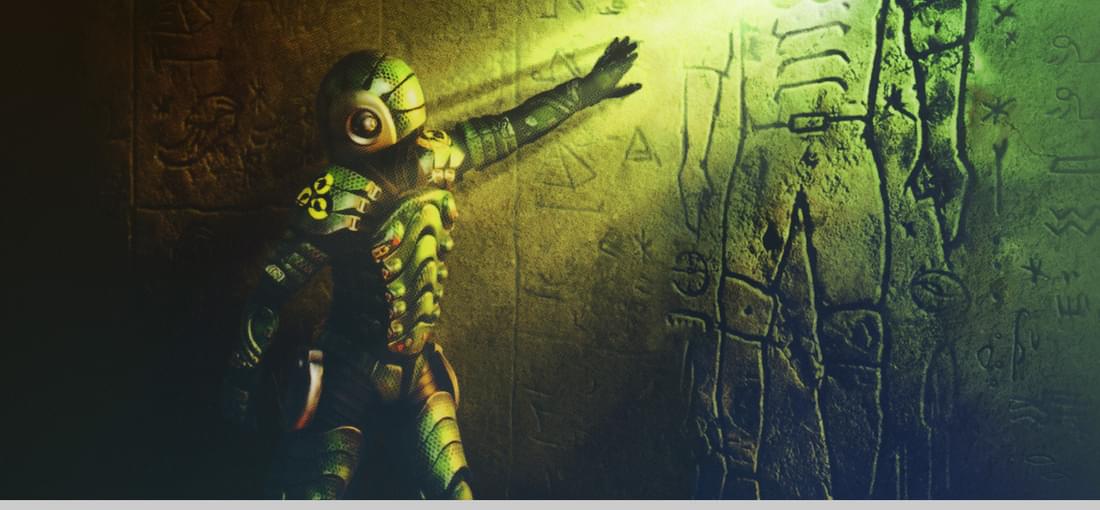


Whenever I see people talking about Harvester, there are two big camps: People who played it, and people who watched it. The former tend to remember its clunky controls, terrible combat, nonsensical puzzles, and ridiculous item-hoarding. The latter tend to just remember the game for its quirky and vulgar subject matter. Harvester, as a game, is terrible. It's nearly unplayable. You have to explore a large town, stockpile ridiculous amounts of inventory, solve nonsensical puzzles, and sit through some pretty heinous voice acting for information. The combat is the worst of it, with unresponsive controls and awful hit detection. There's not much of a game here. The most appealing part of Harvester is technically the least-appealing part of the game. Harvester is violent and crazy, and pretty stupid. Throughout the game, you're subjected to gory cutscenes, awkward sexual content, and and skin-crawlingly uncomfortable characters and situations. It's played as kind of a tongue-in-cheek sort of way about 95% of the way through the game. Inexplicably, the game shifts tones right at the end as it think it has some deep subject matter and wants to teach you something. It's heavy-handed and hypocritical, and it's not going to change anyone's mind. Most people who buy and enjoy Harvester will get the most enjoyment out of the subject matter. As is, if you feel like you have to buy it, have a strategy guide handy. Or better yet, just watch a playthrough of it online.

Military Strategy games have a hard time appealing to everyone. Make it too much of a sim, and it can become a crowded, buggy mess. Make it too simple, and you can lose immersion among the simplified UI and arcadey combat. Full Spectrum Warrior is more suited to the latter than the former, but manages to avoid some of the pitfalls of streamlined action-strategy games. If you've played games like Brothers in Arms, you'll have a good idea of what FSW has to offer. In fact, the game cribs very heavily from Gearbox's WW2 FPS series. You're put in control of one or more teams of soldiers or armored vehicles, and must coordinate their fire and movement to out-maneuver enemies. The mechanics are simple, and fun, and can be quite challenging in some areas. Unfortunately, you're not given too many options to move around, and flanking spots are made pretty obvious by the game design. Otherwise, everything's very streamlined, and you won't run into too many issues with glitches or AI. FSW is a game with solid, easy-to-grasp concepts, and manages to throw enough surprises to keep the game feeling fresh from the beginning to end. there's not much to this game besides the feeling of achievement by overcoming its obstacles with minimal loss of life. It's a fun little campaign that you may play again to see if you can do better than you did on your last run. It's best appreciated as a thinky little action game that you finish off on a lazy weekend.

There are maybe 1 or 2 WW2 games released per year in the AAA game market. Even then, such games are still criticized for being part of the "glut of WW2 games." For those who were too young, or out of the gaming loop a few years back, WW2 games of every genre saturated the market, and the biggest instigator of the movement was Medal of Honor: Allied Assault. It does speak to what the game did well that it spawned so many imitators and profit-seeking opportunists ready to mine the mother lode. So what made this such an important game? Well, for one, up to this time FPSes typically consisted of a pack of separately-designed maps with start and stop points, with illusions of non-linearity. You hunted for keycards, murdered monsters, and worked your way to a final boss. There were exceptions of course. Much like punk rock, modern linear shooters had Half Life playing Iggy Pop proto-punk, but the modern cinematic shooter was really born with the Ramones-comparable Medal of Honor: Allied Assault. There is of course the game's most notable moment, the Omaha Beach Landing level. This was the level that everyone remembers and cites, and with good reason. The sound design was incredible, and I clearly remember playing it near its release with my teeth grit and heart pounding. Unfortunately, time has not been kind to the level. When your game is about bombast and distracting the player with lots of explosions, you'd better hope you have gameplay to back it up. There's a reason why nobody talks about AA's other levels. They're either bad or unremarkable compared to the Omaha opening. Most of the time, you're peeking around corners with a sniper rifle equipped, looking for German soldiers firing their hit-scan laser rifles directly into whatever finger or toe of yours just popped out of cover. This received some fixes in the expansion packs, but you'll be surprisingly adept at spotting German helmets poking slightly over cover by the end of the main AA campaign. The expansions are a mixed bag. They have effective intros as well, but run out of excitement as you solo-force your way through the German lines. There is clear evidence of a game here with big dreams, but not the tools to realize them. It wanted to be the great war game full of nerve-wracking battles, but when you're not clumsily sniping your way through French towns/fields or Saharan outposts, you're watching your allies getting creamed two seconds into what seem to be intended as massive battles. So, should you play it? Who can I recommend it to? If you've played it in the past, acknowledge what's aged poorly, and just want to fire it up with no emulator-fussing, grab the chest. If you're a gamer spoiled on modern games that have more atmosphere, more up-to-date cinematics, and refined mechanics, you will not be impressed by this game. If you want a little piece of history, and are not critical of what features have aged poorly, then you'll get an entertaining history lesson.

Every once in a while, a video game is released where we as gamers can hold it up as something that should be appreciated as a classic artistic creation. Grim Fandango, Psychonauts, Bioshock, Bastion, Silent Hill 2, and countless others have dared to go into places where even other mediums haven't, engaging us both in their worlds and stories, and also in their ability to draw us in with fantastic gameplay. Syberia is one of those games that was created with love and imagination, and every corner of the game comes together to create an engaging, charming experience that anyone could enjoy. Kate Walker is a lawyer on assignment from an American toy company to purchase a failing French automaton factory. Immediately upon arrival in the town of Valadilene, Kate learns that the factory's owner, Anna Voralberg has recently passed away, and ownership rights have been willed to her traveling, mentally damaged brother, Hans. Years earlier, Hans suffered a head injury that inflicted him with an autistic-style mind obsessed with wooly mammoths. Convinced that they still existed in a far-off land called Syberia, Hans set out across Europe in hopes of finding the mythical land. Kate must follow in Hans' footsteps, meeting his old acquaintances and learning from Hans' footprints and legacy. The game is split into several different sections. These range from Valadilene and a university, to an old Soviet factory and an almost-entirely vacant hotel. Each has an assortment of charming, interesting characters. While they are fun and enthusiastically voice-acted, none are particularly deep. It's an incredible nitpick, and it won't bother most people. Kate herself is the most interesting, as she deals with different characters in different ways. Her dialogue and acting represents a wide range of interaction with NPCs, including sympathy for a mentally challenged boy, sarcastic taunting of a lascivious student, or vexation with those who impede her progress. You can see her grow as a character while interacting with Hans' past associates, and with her friends back home constantly nagging on her for taking on her incomprehensible journey. The game tells as much story with its art design as it does with its words. The game has a mixture of early nineteenth century and steampunk aspects, and helps take mundane settings such as the aforementioned factories and universities, and jazz them up with a unique style, and the obvious addition of the automatons left behind by Hans in his travels. The visuals acknowledge limitations of their time, and stuck with a pleasing mix of 2D and 3D aesthetics to create a visual design that looks great even today. Characters feel more like exaggerated silhouettes that are animated well and mix with their great voice acting. Gameplay consists of your average mechanical and dialogue-related puzzles that Kate must solve in order to progress on her journey. The mechanical puzzles are all great fun, showing off the great design of the series' signature automatons and mechanized objects. They require thought but rarely require you to think of ridiculous ways. They're mostly logical and offering enough thought will help you ease into the designers' train of thought. If I have one major complaint with the game, it's the dialogue puzzles. These can get crazy boring and frustrating on a blind playthrough. They're that old kind of "talk to everyone about everything, and keep making the rounds until nobody has anything left to say" form of linear progression that forces the player into constant backtracking or having to re-engage certain topics with NPCs in hopes that they'll say something different this time. The biggest problem I had was when you had to blackmail a group of people making bootleg wine. I ran all over the hub zone, initiating and re-initiating characters loooooong after I had discovered for myself what was up and gathered conclusive evidence because I had to accuse one character, who'd send me to another, and to another, and so on instead of just letting me point to the book that said they had the wine grapes growing in their greenhouse and just ending the puzzle. Don't even get me started on the ones that require you use your phone at the exact right time. They only stood out only because they were the sole frustrating sequences in such a charming game. Alas, while these get more obnoxious than anything, they don't hurt the game much overall. It's just that Syberia was so close to perfection, and having to look up FAQs to find the right sequence of backtracking to uncover a secret that is barely a secret was time-consuming and insulting to me as a player. Overall, it's hard to fault, as these problems just hit a game that hits perfection in so many other areas. Syberia is easy to recommend to adventure fans, or people who want something unique, relaxing, and immersive.

After their super-serious ode to the likes of Twin Peaks and Stephen King's inanimate object horror oeuvre, Remedy's release of more fantastical episodes and DLC packs has been a welcome, but frustrating design switch. In three episodes, the story has gained little progress, especially when you consider that American Nightmare is not considered canon by the developers. it's frustrating to see an arc that hasn't closed, just to have it open new arcs that supposedly aren't part of the one that went unfinished. This time around, Alan is trapped by The Darkness in a few distinct, dream-like locations based around a Route 66 Southwest USA atmosphere. Alan finds himself stuck in a loop between three different small, semi-open-world maps. He is meanwhile heckled and tormented by Alan's doppelganger Mr. Scratch, a personified embodiment of the Darkness, who is posing as Alan's double in the real world. Scratch is interesting. He's a violent sociopath who poses as Alan in the real world, meanwhile taunting Alan about how bad he's screwing everything up in the real world, and plans to eventually kill Alice, Alan's wife. Alan's mission is to break out of the Groundhog's Day-styled repetition of the three zones by performing different fetch quests in each in order to free himself from the ordeal. In each location, Alan meets a different girl. While they have good voice acting and passible dialogue, they're each poorly-written and uninteresting compared to the main game's vibrant cast of memorable characters. They pretty much serve as a way of structuring the Nightmare's plot, providing little else besides initiating fetch quests for you. These fetch quests make up the main gameplay structure of the game. Odds are, you'll beat some enemies, meet one of the location's girls, have to pick up a few items, beat up some enemies, mix all of the doohickeys together, then progress to the next area. This goes in a loop later on in the game, where you found out your previously did something wrong, then have to come back to the location, and do another fetch quest, up to three times per location. It's a boring grind that just serves as a gameplay-lengthener and a way to get more out of the amusing interaction between Scratch and Alan. Fighting is the same as last time. Use light on enemy, then shoot enemy. The only difference this time is that since you're in a dream, the game throws out believability in favor of crazy action and a wider arsenal. This isn't necessarily a bad thing, but without the tense atmosphere of the original game, combat is just combat, with no real emotional investment beyond "kill the enemies and get some stuff." Alan gets more guns this time, the caveat being that he has only his basic flashlight, and that guns can only be unlocked by collecting the various scattered pages of his manuscript scattered about the levels. The guns get bigger and crazier, but are still limited to just firearms, giving you new weapons like automatic shotguns, assault rifles, and even a nail gun. These carry over to multiplayer, which is a co-op affair. I didn't put much time into it, so I don't feel comfortable commenting on it, but it seemed solid enough. Overall, this game is worth picking up if you're a die hard for the series, but given how dull some of it is, and how repetitious it gets, some casual observers of the series may be a little put off.
Far Cry 2 could have almost been my favorite game. The gunplay is great, the open-world design is fantastic, and missions are very fun and open to all different kinds of tactics. Unfortunately, there are some glaring flaws that distract so much from these great features and hurt the game overall. You get to play as a mercenary hunting an arms dealer in a fictional African country. The game starts with a great opening sequence where you ride a jeep through one of the first areas. The game takes this opportunity to set up the background of the game, and what's happening in its world. The dialogue is well-written, but the voice acting is weird. Even though people say their lines with conviction and effort, everybody seems to read their dialogue at a really fast clip. It's like the Micro Machines guy threw on a goofy South African accent, but this is just a nitpick. Everything seems fine until you are introduced to the first gimmick. Right at the start, you are stricken with malaria. Instead of dying, or abandoning your mission to receive proper medical care, you just get a tiny bit of medicine. Over time, you'll get malaria attacks, and if you don't want to pass out where you stand, you have to pop one of your pills. The only problem is that you get these pills in limited quantities (around 2 or 3 per refill), so if you run out, you need to get more pills. These refills are granted whenever you complete specially designated quests. While not a horrible design decision in itself, it hurts the game in ways I'll eventually get to. While malaria is the game's biggest gimmick, it's the gunplay that takes the forefront. This game's combat is fun, and open. You're given a massive arsenal of guns, rockets, mortars, explosives/mines, dart guns, and a flamethrower. The weapons look great, sound great, and are fun to use. There's even a minor upgrade system worth your time. Mission design is dynamic and open to choices made by the player. While the expected base assault/assassination/delivery quests are all there, it's how you complete them that make up the meat. You can silently dispatch enemies with a dart gun, perform a midnight hang-glide into the center of a base, lay booby traps for convoys, or just plain old burn s*** down. The game has great AI. You can distract them by firing and moving to a different position, or by starting fires/setting explosives. The fire physics are a nice touch. Use molotov cocktails, flamethowers, and explosives on the right flora, and you can start a fire that will spread. This can kill enemies, corral them into one area, or distract them so you can do what you want to get by. Unfortunately, while the quests are fun and the gunplay is even more fun, there's just one major nitpick that really, really hurt the game for me: Enemy respawns while on open maps. Basically everybody in the open-world maps is hostile to you, and there are lots of bases spread all over the world, complete with roaming gangs of enemies on the road. The bases are almost unavoidable, and the roamers are all well-armed and seem to spawn right on top of you. You can't shoot while driving, and you can't outrun them, because they'll eventually disable your vehicle. This leads to a tiring grind of "encounter enemies, exit vehicle/switch to turret kill all enemies, get out of car, fix car, get into car, then proceed to the next ambush." It's tedious, boring, flow-breaking, and repetitive. Then, when you throw the malaria gimmick in, you add even more steps. I had one occasion where I got my malaria meds, got ambushed a bunch of times to initiate a quest, then had to drive over to the other side of the map, meanwhile getting ambushed and having to pop more pills. I ran out of pills by the time I reached the mission section and passed out about halfway through my objective. Crytek usually has high gameplay standards, and it's a wonder if anyone tested this game in a whole playthrough instead of just segments or something. There's a game worth playing here if you're willing to put up with grind, but I'd recommend easy mode. Not because I'm a whimp, just because it's easier on the nerves , and you get to appreciate all of the things that the developers did right. It's just a shame that you have to put up with some really terrible decisions to get there.

It had been about four or five years since I'd last played this game, and I was expecting.to have some nostalgia broken by poorly-acted, live-action FMVs and Arthur's terrible jokes. I was surprised to see how much better it had held up. Only a few characters have downright awful acting, and Arthur is actually funny to me again after my sense of humor has matured (and I understand more of his references than I did when I was 10). Overall, this game has matured well, with perhaps only the low-definition FMVs being the sole aging dinosaur of the game. The story kind of picks up from Journeyman 2, but you don't need to play JP2 to get it. Enough vague references are made that you can get enough of a basic gist of what's happened up to this point that you can follow the story. I can only describe the plot in one way (said in sort of a long sigh tone): "ehhhhhhhhhh." There's some story of an unseen evil alien race taking on your allied race of bird aliens, a conflict millenia in the making, yadda-yadda. The whole overarching plot is dull but provides enough of a backdrop for the gameplay that it does its job, just not as fantastically as it thinks it does. Your goal is to be spending most of your time unraveling mysteries behind the conflict and collecting a magical Macguffin in three distinct historical locales: Atlantis, El Dorado, and Shangri-La. Early on, you'll meet your buddy Arthur from JP2, who is now a Human AI/Virus who fits himself into your suit. Throughout the game, Arthur provides contextual, gameplay, and historical information, as well as being the comic relief/hint system. His voice actor does a very good job, outpacing the rest of the actors in the game by a mile. I can understand impatient people getting annoyed by him, so you can set the game so that he only provides commentary when prompted to, so at least there's that. While the plot is lame, Arthur isn't the only interesting narrative hook. All of the locations you visit are unique and well-realized. The characters you meet in each location are acted as well as could be expected. Even the semi-accomplished D-llist actors can't work up much enthusiasm for a video game green-screen. The acting isn't bad at all-just mediocre,, and the actors all at least try to have a little fun with their roles. Gameplay, as in any standard point-and-click affair, takes the form of puzzles. These essentially follow two types: Conversational and mechanical. The former is accomplished through disguising yourself as various characters to gain information to then use on other characters to help clear your path. The latter is the simple faire you're used to in this genre. Use Item A on item B to get a solution. The best part about this, though, is the puzzle logic. Finding that sweet spot in point-and-click adventure games puzzles is difficult. Often, puzzles are too mechanically easy and sound, and even more often, it's difficult to jump onto the same logic chain as the game's creator(s). This creates frustrating scenarios where you are literally just taking everything in your inventory and rubbing it against everything else in the game, trying to jump onto the same thought process as the developers. Sierra games would dole out death or point-of-no-return sequencing for daring to not be as smart or talented as Roberta Williams, and Lucasarts would try to keep you in a good mood with quirky, fun writing to ease frustration. I've played Journeyman Project 3: Legacy of Time several times over the past 15 or so years, and while there have been times where I've been stuck, I've never really been frustrated. All puzzles follow rules of logic and basic mechanics, and some items even have multiple uses (without that Sierra crap of ruining your game). I remember almost being shocked that Arthur said it looked like a rope could be cut, and when I used my knife on the rope, it cut the rope! No frustrating crap like having my character say "But I don't want to break the knife" and finding some convoluted, nonsensical way of cutting it that no human could have figured out on their own. It sounds like I'm obsessing over something simple and pointless, but you have to understand that as this was near the end of the point-and-click genre's popular run, most games up to that point were pretty much just guessing and wild chance to solve, while this game challenged players to think logically. There's a lot to like here. The gameplay is solid (with a built-in hint system if you need a push), each of the locales is fun to visit, and Arthur's company is note entirely unwelcome. If you can forgive some of the basic faults of FMV era games, I can recommend this as one of my favorite PC games.

I'm trying not to candy-coat this game, and the review is meant for first-time players. When Silver came out, it was very dividing. While reviewers were lukewarm, fans immediately gave it a cult following. It does a lot of cool things, like good voice acting, tense atmosphere, great art design, and some interesting real-time combat mechanics. Unfortunately, some people may be turned off by the lame story, lack of guidance from the game, and weird difficulty decisions. The plot is simple faire: The evil king Silver has stolen all of the women for himself, and the player character David must gather a party to rescue his wife, the rest of the women, and defeat Silver. The plot is lame, and the writing is flat and uninteresting. This is not to say the narrative is ultimately bad, though. There is good story-telling here, but it mostly comes from things like character interaction, and the wonderfully-designed levels and great art style. Ally characters are not especially well-written, but they're likable and distinguishable enough in combat that you'll quickly develop favorites and tailor your parties thusly to take into the dungeons. Speaking of dungeons, each level and section of the game is vibrant and atmospheric, and each dungeon is more fun than the last. Getting to these is sometimes frustrating, though. See, although Silver is a linear tale, exploration is mostly non-linear, meaning you can go pretty much anywhere from a certain point, but you're sometimes never given an indication of where to actually go. This creates frustrating instances in first playthroughs where you're literally just wandering the world map trying to find the one screen where a scripted event will trigger, or where a previously-blocked path will now be open. I still remember message boards full of people just raging because they didn't know how to open the gate in the castle basement, because you needed a ranged character to lock onto and hit a hidden switch next to the gate. The gameplay itself is fun. As you go around picking up new allies, each of them has their own special niche such as melee weapons, magic, hand-to-hand, bows, etc. Fighting is done real time in a hack-and-slash manner, and while the combat system takes a bit of acclimation to get used to (sort of like a streamlined Resident Evil but with more options), it's ultimately well-designed and serves well with the rest of the game. You can take control of each character individually, which is welcome because they're not particularly bright, and do not prioritize their targets well. If I could give one hint though, always take a ranged unit with you. You absolutely need them to solve some puzzles, and there are nasty enemies that can only be taken out with arrows/magic/thrown weapons. This game is hard, as well. There are no real villages, and only one screen with stores, and absolutely no inns, so you have to make due with all of the healing items that you have, and drops are inconsistent. Sometimes, you'll get a bunch of potions and food in a row, but then can go a whole dungeon without any substantial consumable items. Just remember to grind where you can, and take all optional side-quests to get extra items and more characters. The game may be difficult, but it gives the tools necessary to overcome it if you are patient. Overall, Silver has some flaws, but what it does well makes it worth playing. Its atmosphere and gameplay make it fun to play, but its lack of direction will frustrate first-time players.There's some interesting stuff here, but you have to be dedicated in order to get to it all.